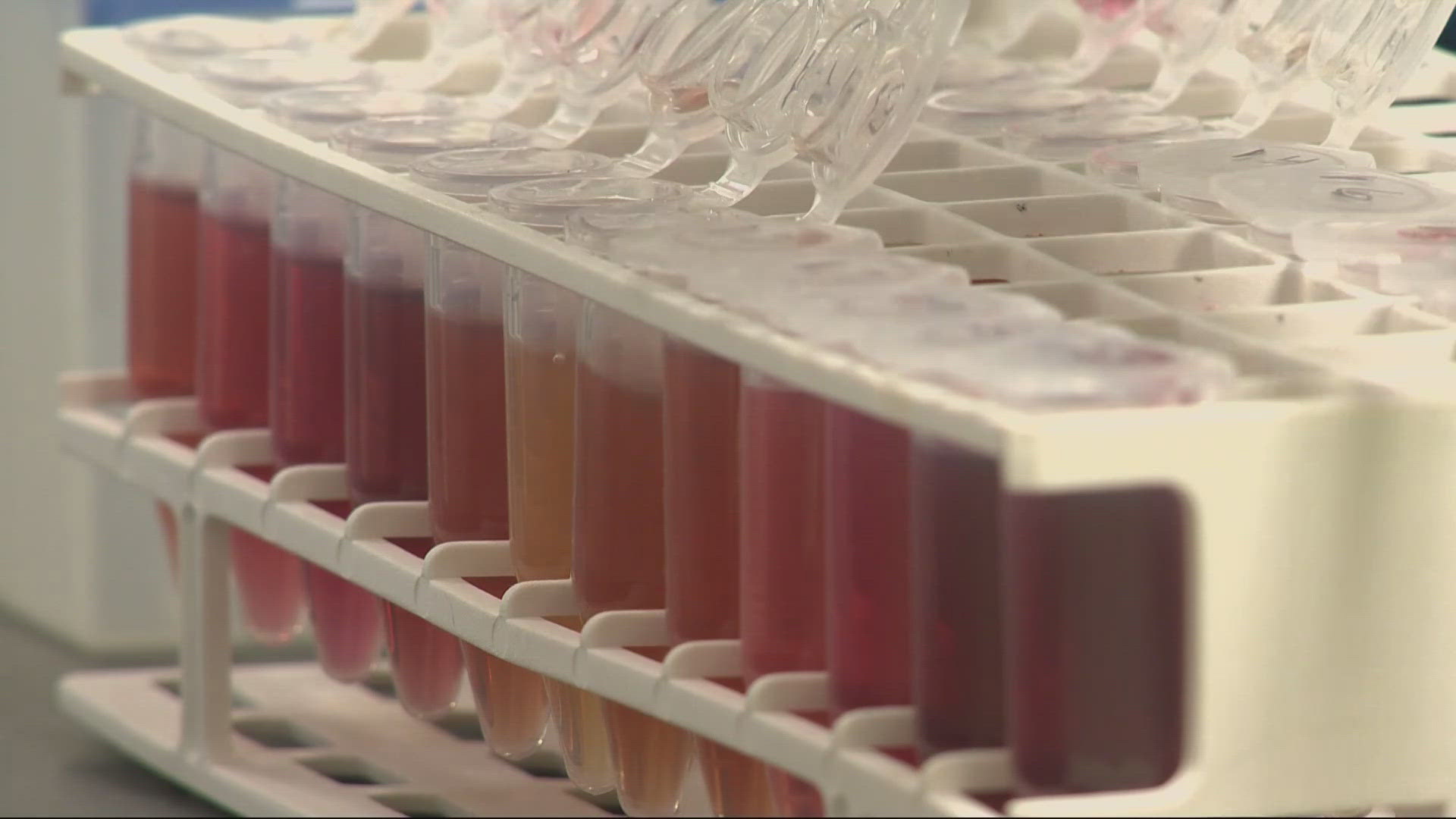CORVALLIS, Ore. — There's a new science lab on the campus of Oregon State University in Corvallis. What used to be a storage unit has been converted into a state-of-the-art lab to detect wildfire smoke in wine grapes.
"It's just a really cool looking lab, and this is where the nerdy side of me kind of comes out," began Cole Cerrato, an assistant professor at Oregon State's department of food science and technology. "What happened in 2020 is we had a lot of samples all through the valley, all over Oregon, that needed to be tested, and we didn't have enough testing facilities."
The new Smoke, Wine and Grapes Analytical Chemistry Lab at Wiegand Hall was lobbied for by the wine industry to the state of Oregon after the 2020 wildfires to help test more samples of grapes impacted by wildfires so there wouldn't be a large backlog of samples. The state allocated $2.7 million from its general fund. It'll give winemakers a quicker return on the testing of their grapes to see how bad the smoke really was for them.
"The first thing the winemaker needs to know is how much is in there," Cerrato said. "The second thing the winemaker needs to know is what is the threshold of impact for them. We know that not all smoke is equal. Older smoke is not nearly as effective in terms of bringing about that smoke flavor; distant, same thing. Closer smoke tends to have more impact. Varietal can also make an impact."
He said his lab can determine the type of smoke and the compounds of that smoke that are impacting it, as well as how each different varietal is impacted and then pass that information on to the winemaker.
"So, what the winemakers really need and what we're able to provide is that information — and the more information that these winemakers have year over year, the more predictive power they're going to have in being able to tell if their wine has been smoke impacted," Cerrato explained.
When winemakers send in their grapes to the Oregon State lab to be tested, researchers turn those grapes into wine, then test that wine for the different smoke compounds.
"They are affected differently," Elizabeth Tomasino, professor in the food sciences department, said. "For example, pinot noir is quite impacted compared to cabernet sauvignon, and petit verdot is just gross. We're trying to figure out why, because if we can figure out why, we can maybe recommend different winemaking practices so it's not as much of a problem."
Each sample costs around $400, but instead of taking weeks to turn around a sample, Cerrato says it can be done in three days. He said the new lab helps get results about 20 times faster, and they are able to push out about four times as many tests than before. If the work is constant and done back to back, they could do about 50 a day, but Cerrato said that number could likely rise to closer to 100 a day as the work is perfected.
Tomasino said her hope for the lab's work is that over time, winemakers will be better informed about how smoke impacts their vineyard and what to do with the grapes if they are impacted by wildfire smoke. She called it a sort of risk management guide.
"If you have this level of smoke in the vineyard, should you pick your grapes or not? Or if you have this amount of smoke and you applied our coating, should you pick your grapes or not? Or yes, you can pick your grapes, but you're going to have to change your wine making practices to do that," Tomasino said.

